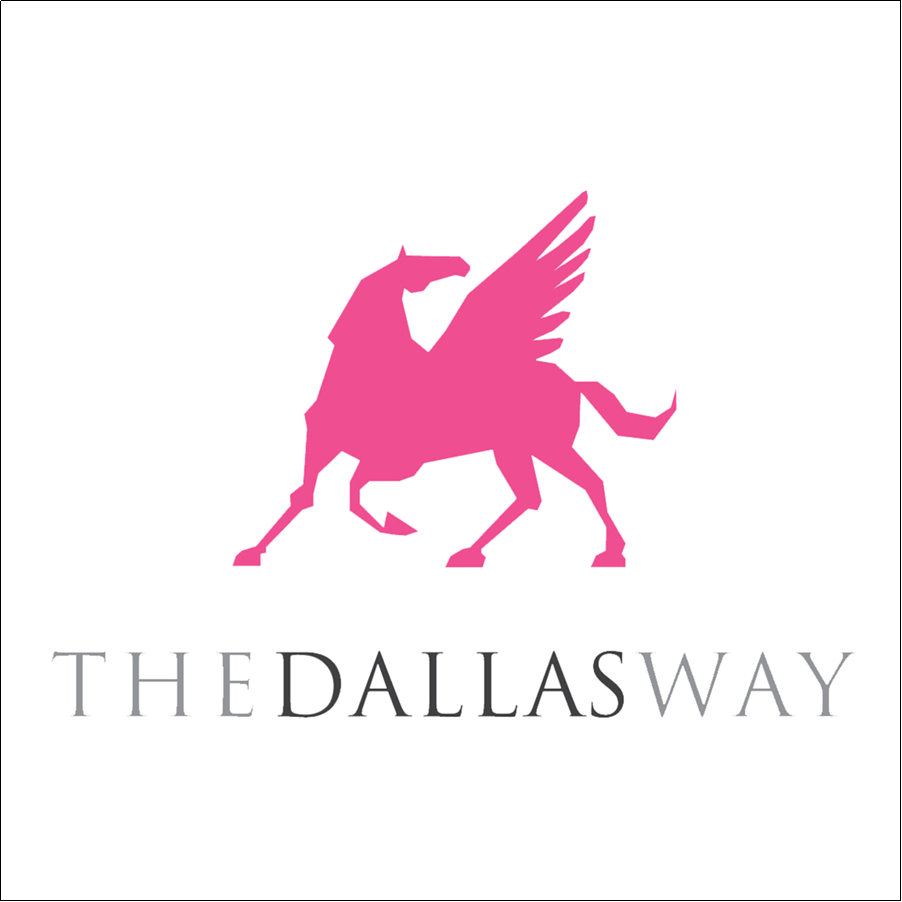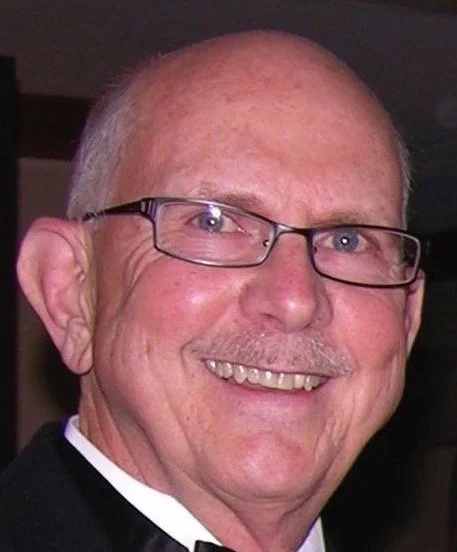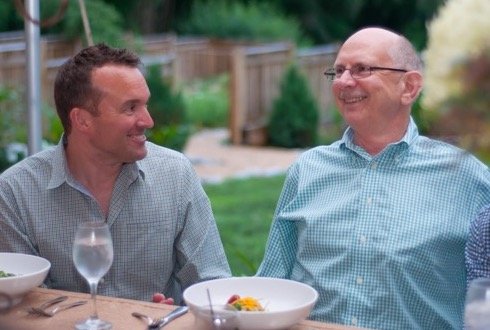In early 2022, Washington author Brock Thompson set out to capture some of the high points of the long life of a most remarkable human being. After much research and interviewing, this is what he discovered.
Early Life
Born July 2, 1947, in Houston, Texas, to Bill and Mildred Waybourn, William Waybourn was just one of the many in the American post-war “baby boom.” At six months old, he and his family relocated to Matador, Texas, his parents hoping a warmer, dryer climate would help alleviate William’s asthma. There the family owned and operated a 24-hour truck stop and restaurant, Waybourn’s Cafe, catching the semi-trucks and tractor trailers crisscrossing the bustling intersection of US 70 and Texas 70. His early lessons in morality and common decency came from his parents. His mother was a registered nurse who helped sew up and shelter battered black women. The restaurant they ran did not discriminate among the races. All were welcome and all were treated equally. In fact Waybourn saw this openness, unusual for that day, cost his parents the business of the bus company, which soon changed its “rest break” stopping point to a nearby drug store where “white” and “colored” restrooms and drinking fountains were offered.
The family home was on a nearby farm, and Waybourn enjoys telling the story of a “runt” piglet he named “SusieQ” … given to him by his father because she was rejected by the nursing sow and was not expected to survive. “I fed SusieQ with an eyedropper until she was old enough to eat on her own, and I trained her to respond to me like a dog. Unfortunately, she soon outgrew her quarters at our place so I sold her to a nearby mother and daughter who were wanting to raise pigs. They took SusieQ in and treated her royally. She was happy and prolific, producing large litters of 20 to 24 piglets. I learned how even the least among us, despite a rough start in life, can end up bering the most productive.”
You could say the small business drive was in the blood ever since the Waybourn’s early restaurant days. And, according to Waybourn, he was “raised to be independent,” a characteristic that stayed with him throughout his adult years. Beyond that, the Waybourns were “very much into common sense.” These were all qualities that would always serve him well.
Craig Spaulding, just back from Vietnam (1973)
He graduated high school in 1965 with the rest of his class of 25. That was followed by two years at South Plains College in Levelland, Texas, a town made somewhat famous after a well-publicized 1957 UFO sighting. While at college he juggled three part-time jobs — a trainer for the men’s basketball team, a member of the school newspaper staff, and as a copy editor and reporter for the local newspaper, The Levelland Daily News. He followed that with two years of Texas Tech in Lubbock, Texas. Getting lucky with high draft numbers and effectively avoiding Vietnam, Waybourn began his journalism career at The Lubbock Avalanche-Journal, and later moved to Dallas in 1972 to join the editorial staff of The Dallas Times Herald.
There, in 1973, in a stairwell, he met Craig Spaulding. Spaulding, a graphic artist for the paper, was just back from serving in the Vietnam War. Both of them, luckily, were assigned to the weekend section, with Craig as the art director and William as the editor. Lunch breaks turned into romantic adventures at home, and William would make sandwiches they’d eat in the car on their drive back to the office.
Crossroads Market
Drawing from his entrepreneurial spirit, and along with Dallas gay figures Terry Tebedo, Bill Nelson, Phil Johnson, and his now partner Craig Spaulding, Waybourn opened the Crossroads Market on Dec 5th, 1980. This was the time of the gay bookstore — the Oscar Wilde Bookshop in New York City, Lambda Rising in Washington, D.C., Gay’s the Word in London — spaces more than just bookstores. These shops doubled as community centers and important gathering spots, and Crossroads Market, sitting at the intersection of Throckmorton and Cedar Springs in the heart of gay Dallas, was no exception. They sold most anything, from candy to furniture, books and gifts, anything gay related. The space had 4,000 greeting card fronts, and – thanks to a warehouse full of goods from the liquidation of the Italian trade commission – a great deal of Italian ceramics and pottery. As part of the community spirit of the place, they offered free coffee and a free-to-use copy machine. The space proved to be extremely popular, and became the forerunner for the Dallas Gay Alliance’s storefront location that later opened in its own space a few doors down the street.
The1980s was a time when information, especially on the AIDS virus, was both rare and vital, the Crossroads Market and the Dallas Gay Alliance’s community center were the only real gay and lesbian source of information anywhere between San Francisco and New Orleans. Customers would drive from Oklahoma, Arkansas, and Louisiana to come to the Crossroads Market. Bestselling books included Susan Cottrell’s Mom, I’m Gay and Andrew Tobias's The Best Little Boy in the World.
As the AIDS virus began to take hold in Dallas, the Crossroads Market responded, and the DGA’s AIDS Resource Center only cemented the area as a vital community asset. “Whatever someone needed, we tried to do,” Waybourn said. The Center organized financial assistance, medications, anything. Waybourn and his friends would even immediately go to the homes of the recently deceased and empty out their medicine cabinets, adding it to a general supply for others in need. In one instance, Waybourn recalled that two men were discovered sick in the suburbs of Dallas. They had no money, no food and their electricity had been cut off. Waybourn’s business partner Bill Nelson removed the Crossroads Market Christmas display from its front window, devoting it instead to a single barrel and a sign asking for donations of food items. Within hours, the response was so overwhelming that the window had to be “harvested” daily as more and more customers arrived with shopping bags full of groceries and supplies. Not only were the two men taken care of, but this was the beginning of the local AIDS food pantry, later affiliated with the Dallas AIDS Resource Center. The food pantry continues to thrive to this day.
Waybourn with Black Tie co-founder Mike Anglin
BLACK TIE DINNER
In the spring of 1982, Waybourn joined with John Thomas, Mike Anglin, Dick Weaver and Ray Kuchling to form what is today the nationally recognized Black Tie Dinner. Today, 40 years later, it is still one of Dallas’s preeminent LGBT organizations, raising many millions of dollars over those years in support of both the Human Rights Campaign in Washington, D.C., and numerous local Dallas-area charitable organization serving the LGBT community at all levels. In 1990 the Black Tie Dinner organization awarded its highly coveted Kuchling Humanitarian Award to Waybourn in recognition of his extraordinary gift of service to the Dallas LGBT community. In 2014 he flew from Washington, DC, to Dallas to present that same award to his close friend and co-founder of the organization, Mike Anglin. “Mike and I have always enjoyed getting together and recounting the early days of this organization, the thrill of creating something that is good and lasting.”
The Decade of Adversity
Meanwhile, some of Waybourn’s greatest challenges were more personal. Few people know about his battle with familial hypercholesterolemia and heart attacks at a relatively young age. "The first heart attack was in 1984, and I didn't realize the impact of high cholesterol, so it was quite a surprise. I had not felt well but assumed it was a ‘bug.’ I was driving home and passed out, and luckily the car rolled to a stop. Craig called 911, and I was lucky. But the emotional toll afterward, having a heart attack at the age of 36, was brutal. Depression set in, and I was paralyzed with fear of having another one.”
After a few months of being a “basket case,” his closest friends Bill Nelson, Terry Tebedo, and John Thomas did an intervention of sorts. "We need you back," Waybourn recalls Nelson saying, in his typical take-charge fashion. "Get over it!"
Nelson had already outlined how he wanted to transform the DGA from a political organization to a service organization, delivering actual services to the LGBTQ community. “With their support and help, counseling, and some significant changes in my lifestyle, I was finally able to get back on track,” Waybourn said.
Subsequently, Waybourn had another heart attack in 1996, and today his heart includes several stents covering a 20-year period. Ask how he overcame the same fears after the second blockage, he noted that he learned during AIDS to live for the moment, as the future is uncertain.
Two men raising a young girl in those times was much different from today and more complex. Stephanie was Spaulding’s biological daughter, and he shared joint custody with Stephanie’s mother. Parented by two men, Stephanie received “total immersion” into the gay world. Waybourn said nothing was hidden from her. When older, Stephanie became an activist in her own right but discovered that having “two dads” wasn’t the norm in junior high. Waybourn’s public life also caused her to bear the brunt of having a different family, and she learned to pick her friends carefully.
It was at this time that Waybourn, despite all of these challenges, became president of Dallas’s principal LGBT socio-political organization, the Dallas Gay Alliance.
The year 1986 was one of terrible setback. In April, a faulty light fixture caused a fire that would burn the Crossroads Market to the ground. Co-owner and business partner Bill Nelson lost his bid for Dallas City Council, and Bill’s life partner and co-owner Terry Tebedo was diagnosed with AIDS-related non-Hodgkin's lymphoma. 1986 saw an explosion of AIDS cases in Dallas. And in those early years of the AIDS epidemic, anyone who contracted the disease would likely die of it. It was just a matter of time. Waybourn called it “the days of two funerals” — one for the family, one for the friends. With great effort, the business was rebuilt, and after all the partners except Spaulding and Waybourn had died, they sold the bookstore in 1991.
Asked how he and others handled the loss of so many friends to AIDS, Waybourn said it was much more challenging than anyone today realizes. "It was like living in a war zone. Even today, something will remind me about someone, and it all comes flooding back,” he said.
Waybourn and John Thomas at a DGA meeting
At dinner one night with friend Bruce Monroe, Spaulding and Waybourn listed all the people they knew who had died. "It probably wasn't a good idea because there were so many," he said. "When Bill Nelson died of AIDS complications, we still had the store (Crossroads Market). While people meant well, they came into the store and wanted to talk about Bill. Or Terry. Or Mike Richards. Or someone they had just lost.”
Waybourn says the grief was palpable. While death was a relief for the sick, it didn't help those left behind. The suffering was universal; he said, "I can't answer how others got through their grief, but Craig and I tried to avoid focusing on death, but instead focused on how fortunate we were to know and care for someone for the short time they were alive.”
The Victory Fund
If anything, despite the ugliness of it all, AIDS cemented the movement and sharpened its energies and purposes. The Fall of 1990 saw Anne Richards winning the Texas governorship, crediting her victory in large part to Emily’s List, the grassroots funding pact seeking to elect female Democrats to office. Waybourn saw the need for the same type of support for LGBTQ candidates for public office. and in an effort to re-create it, he started the Victory Fund. David Mixner, a well-known LGBTQ activist, agreed to serve as its first co-chair, and donated $10,000 to get the idea off the ground. The caveat was that Waybourn would need to move to Washington, DC, to run it. Two days after the store was sold, in April of 1991, he drove to Washington with his dog. Craig Spaulding came the following October with the cats. Initially, he set up shop in a basement at the corner of 13th and Corcoran Streets. With just a cheap printer and even cheaper computer, they sent out letters requesting a modest $200 donation, with $100 going to the Victory Fund, and the other portion going directly to candidates. Then, they would ask each recipient to refer 10 friends. It proved highly successful and by the end of 1991, a valuable national mailing list of who’s who in the LGBTQ community had emerged.
Waybourn and playwright/actor Harvey Fierstein
According to Waybourn, “money was the secret ingredient” to running a good, successful campaign. Adding, “if you didn’t have money you couldn’t do anything.” Big donors soon emerged as well, including James Hormel, heir to the meatpacking fortune and Bill Clinton’s controversial pick for the ambassadorship to Luxembourg, and Chuck Holmes of gay porn giant Falcon Studios. By the count of the Victory Fund, at the time of its founding there were less than 100 openly gay public officials in the United States. By Clinton’s election in 1992 and the promise of gays and lesbians serving openly in the government, that number began to grow exponentially. In 1993, the Victory Fund launched the Victory Institute to train prospective candidates, and a Coalition Appointments Project, seeking to fill presidential appointments with LGBT qualified candidates. This led to over 1,000 gays and lesbians securing presidential appointments.
Whereas the Human Rights Campaign sought to lobby those in power, the Victory fund sought to put LGBT people in power. The growth of the Victory Institute’s candidate training mushroomed, and by the end of Waybourn’s tenure in 1995, scores of LGBT candidates were elected to office with help of the Victory Fund, including Wisconsin’s Tammy Baldwin, and Seattle’s first woman of color and lesbian on the city council Sherry Harris.
GLAAD
In 1995, with Waybourn’s background in media, he was chosen to be the first national managing director of GLAAD, the Gay and Lesbian Alliance Against Defamation. At that time, GLAAD was a loose confederation of chapters, mainly dominated by those in New York and Los Angeles. Waybourn was tasked with molding GLAAD into a national organization within two years. The advent of the internet saw greater group cohesion. And a hallmark success of Waybourn’s tenure came with the corporate involvement of companies like Absolut Vodka. The “Ask for Absolut” campaign and the brand’s own successful rainbow pride bottle art marketing drive saw GLAAD securing its first million dollar donation with this joint marketing effort.
Waybourn with close friend Eric Fanning, Secretary of the Army
THE WASHINGTON BLADE
After leaving GLAAD, Waybourn started Window Media in 1997 with partners Chris Crain and Rick Elisasser, aiming to buy LGBTQ newspapers around the country. He started with the purchase of The Southern Voice in Atlanta, then the Houston Voice and The New Orleans Impact News among others. In 2000, Waybourn and his partners sold the majority ownership to Avalon Equity, a venture capitalist firm out of New York that owned over 80 radio stations and other media forums. That deal required that Waybourn stay on as CEO for five years. With Avalon’s backing, Waybourn bought The Washington Blade and The New York Blade.
In the aftermath of the terrorist attacks on September 11, 2001, travel stopped. And with no tourism came a loss of vital advertising revenue. New Orleans folded, then Houston. The New York Blade followed. At the end of his five-year tenure, in 2005, Waybourn stepped down as CEO, seeing the internet as a deathblow to small newspapers that depended on personal advertising for their bottom lines.
Later Life
2005 saw Waybourn’s official retirement. But after three months of sitting idle, he created the Longview Gallery, turning a once abandoned warehouse in central Washington, DC, into a popular art gallery and special events venue. Today, Waybourn and his partner of 48 years, Craig Spaulding, own several companies. Beyond myriad other interests and hobbies, Waybourn also enjoys photography. He and Craig split their time between their homes in the District and rural Virginia.
Civil rights activist, leader, mentor, counselor, politico, newspaperman, entrepreneur, philanthropist, photographer, restauranteur — there are so many different roles a man can play in building a community. Rarely have so many such roles fallen onto the shoulders of one person. Coupling that plain Texas brand of common sense and true American drive and spirit, one would have to ask how would Waybourn label himself? Left up to him, he just said, in that modesty he’s famous for, “I’ll let other people define me.”










